South Vietnam, Military Stamp 1969, February 22nd, 1969, Michel Nr. SVN M2; On January 30th, 1968 the National Liberation Front (also known as Viet Cong) and the People’s Army of Vietnam deceptively used an agreed upon temporary armistice during the Tet Holiday (the Vietnamese New Year) to conduct surprise attacks on the Army of the Republic of Vietnam . To commemorate the event the South Vietnamese Government issued a crudely made stamp that depicted North Vietnamese soldiers slaughtering infants, setting fire to villages and driving out the population.
Here is the mint stamp
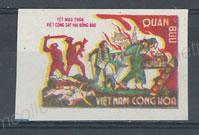
Here are two very rare used stamps with the “mute” Quan Buu military cancel.
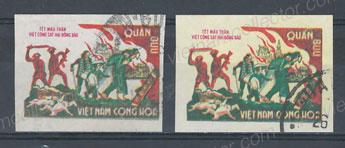
The stamp was probably intended as a propaganda tool and morale booster for the ARVN troops. Michel (which lists the stamp as M2) and Scott (which lists the stamps as M3) catalogues indicate that the stamp was issued on February 22nd, 1969. The offensive ended in February and so this date may indicate the end of the campaign, though that is ill defined. However, the issuing date in the catalogues is probably false as First Day Covers of the stamp show a date of February 1, 1969.
First Day Cover
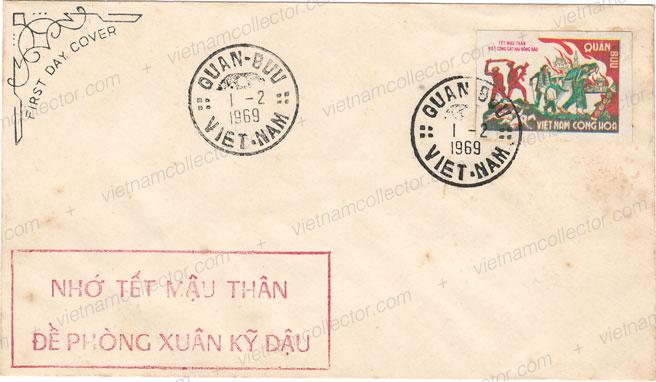
That first day is within one day of the start of the Tet offensive and therefore makes more sense. The stamp was apparently produced locally in South Vietnam which was not the case for other South Vietnamese stamps that were produced abroad (mostly in Europe and Japan). The printing method was “offset printing” in which color picked up by the metal plate is first transferred to a rubber mat that then transfers the paint onto the paper. The image is made up of a great number of small single color dots that, by applying various print runs, overlay each other to produce the multi-colored image. This method is inexpensive and fast but it does not produce very crisp and clear images. On top of that, the South Vietnamese postal authorities must have had little experience with “offset-printing” as the stamp they produced was in many ways of poor quality. The stamp, which is thought of being issued in panes of 100 (10 rows with 10 stamps each), was produced solely imperforate and without gum. The sheets were then cut into horizontal strips of 10 in the printing shop and delivered to field post offices.
Here is a very rare complete strip of ten stamps (for technical reasons in two separate scans)


As was the case with the only other military stamp from 1960 (Michel Nr. M1, Scott M1 and M2), it was given to military personnel free of charge at the rate of two stamps per month. One stamp covered the standard surface letter rate. Additional services had to be paid extra. The described distribution method makes any units of this stamp that are greater than two pretty rare as most strips of ten were simply cut up as the stamp was handed out. Also, one couldn’t just go to the post office and buy these stamps as they were unavailable to the general public. Scott values a complete strip of ten at $700, which is only a surcharge of $50 over 10 individual stamps. This valuation clearly understates the scarcity of such a unit. There are a handful blocks of four of which the author has only seen photocopies of. They were reportedly only issued to high level military officers as a gift. Such blocks of four are great modern rarities.
Michel lists a mint stamp at €70 ($87) and Scott at $65. The author always thought that was a bit too high as the stamp seems readily available on stamp websites at a lot less than that. That was until he discovered that most copies offered on E-Bay and Delcampe actually are forgeries.
Note that forgeries of this stamp abound. Based on the editors observations nine out of ten of these stamps are simply photocopies of the original. They are easily identifiable as the photocopying process does not quite transfer the various colors truthfully. The original cherry-red inscription at the top left has more a brownish appearance on the forgeries. Below are two forgeries (one on white and one on yellowish paper). This shows that some of the forgeries even received fake cancels.
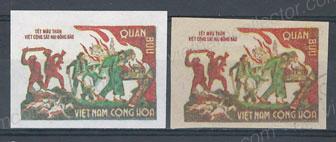
Eleven of the thirteen single stamps in the author’s possession, acquired over time with collections, turned out to be simple photo copies on white copier paper. Given the poor production quality of the original stamp makes it, of course, easier for forgers to conceal their handiwork. However, the differences between original and forgery become instantly clear when one puts both versions under a microscope:
-the inscription “TET MAU THAN VIET CONG SAT HAI BONG BAO” in the originals is a bright “cherry” red and the inscription is very clear. On the forgeries, the inscription is blurrier and of dark red color. (The first scan shows the original and the second scan shows the forgery)


-the red in the design show similar differences but here the color is a bright dark red in the originals and a dull dark red in the forgeries. Also, color surfaces on the originals are solid, while the forgeries show uneven coloration with small white blotches.
-the paper of the originals is slightly thicker and off-white, while the copier paper used for forgeries is snow white or yellowish and a bit thinner.
Used copies are valued at €80 ($100) in Michel and are not priced in Scott. Based on how difficult it is to find genuine used copies (that should show the “mute” cancel Quan-Buu) this appears much too low. The author believes that a price of €250 for used stamps with a legible cancel or the -.- (cannot be priced for lack of market data) would be more in order.
The prevailing usage date of this stamp is during the year of issue and until early 1970, though later days are technically feasible. This indicates that the stamp was probably considered more of a commemorative issue for one special occasion and not a definite issue (such as South Vietnam M1) that was supposed to be used over a long period of time. M1 can be found plentiful from 1960 all the way up to the fall of Saigon on April 30th, 1975. That is definitely not the case for M2. As a matter of fact, genuine covers of the M2 stamp are very rare and they usually retail for around $500.
The editor always wondered as to why this was the case. It is conceivable that the stamp was printed as a “one-off”. So, when military personnel received it, they mostly kept if for collection purposes rather than using it on their mail. However, the editor is open for other theories that may explain the scarcity of M2 on cover. If you have any information please contact him under the contact feature of this website.
Very rare single franking of the military stamp sent in July of 1969 from the Thu Duc Military School (KBC 3529) to a civilian in Saigon. Red KBC cachet on front.
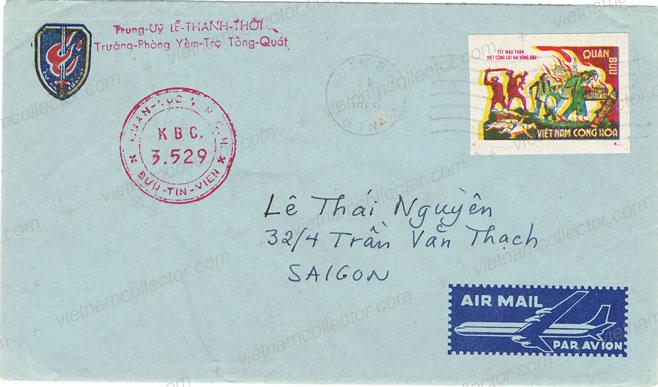
Very rare registered mixed franking of the military stamp together with two 4D Air Mail stamps paying for a registered domestic letter sent from a member of the military (KBC 4323/2nd Division, 2nd Battalion Company 3) to a civilian in Cholon. The letter received a military R-label and was cancelled with the “mute” Quan Buu cancel. Red propaganda sticker on front.
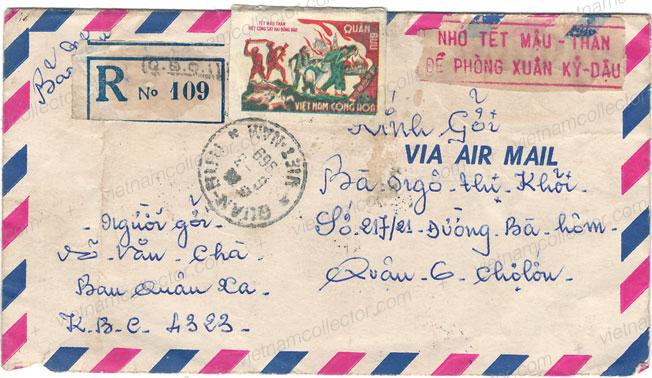
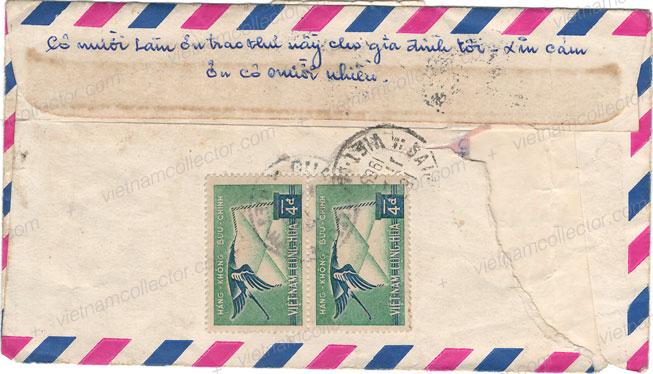
Vietnamese stamp production was much more error prone than European production. One can therefore find the occasional error stamp. Below is a strip of five stamps that shows two printing errors. One is the fact that the various print runs do not overlay exactly. The grey color is slightly shifted to the right but this is pretty common with this stamp. What is less common is the fact that entire yellow color is missing. So, keep your eyes open!
 Detailed scan of one of the error stamps.
Detailed scan of one of the error stamps.
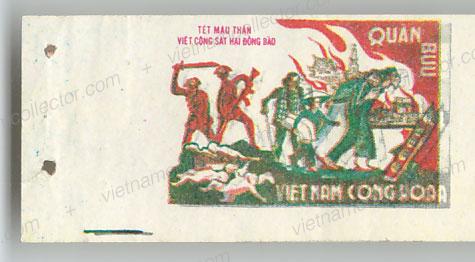
A folded letter in a similar design but in blue color was issued at the same time as the stamp above. According to Dr. George Vanderburgh (SICP Journal Nr. 20 from December 1976) it was first released on February 22nd, 1969. Here is the mint version.

Folded letter with the free frank sent by a member of the military (KBC 4017/41st Ranger Battalion; 58th Ranger Battalion; 7th Ranger Group) in May of 1972 to a civilian in Saigon. The top left carries the remark “Hanh Quan Vuot Bien” (= Outside Country Operation) indicates that the unit was employed either in Cambodia or Laos.
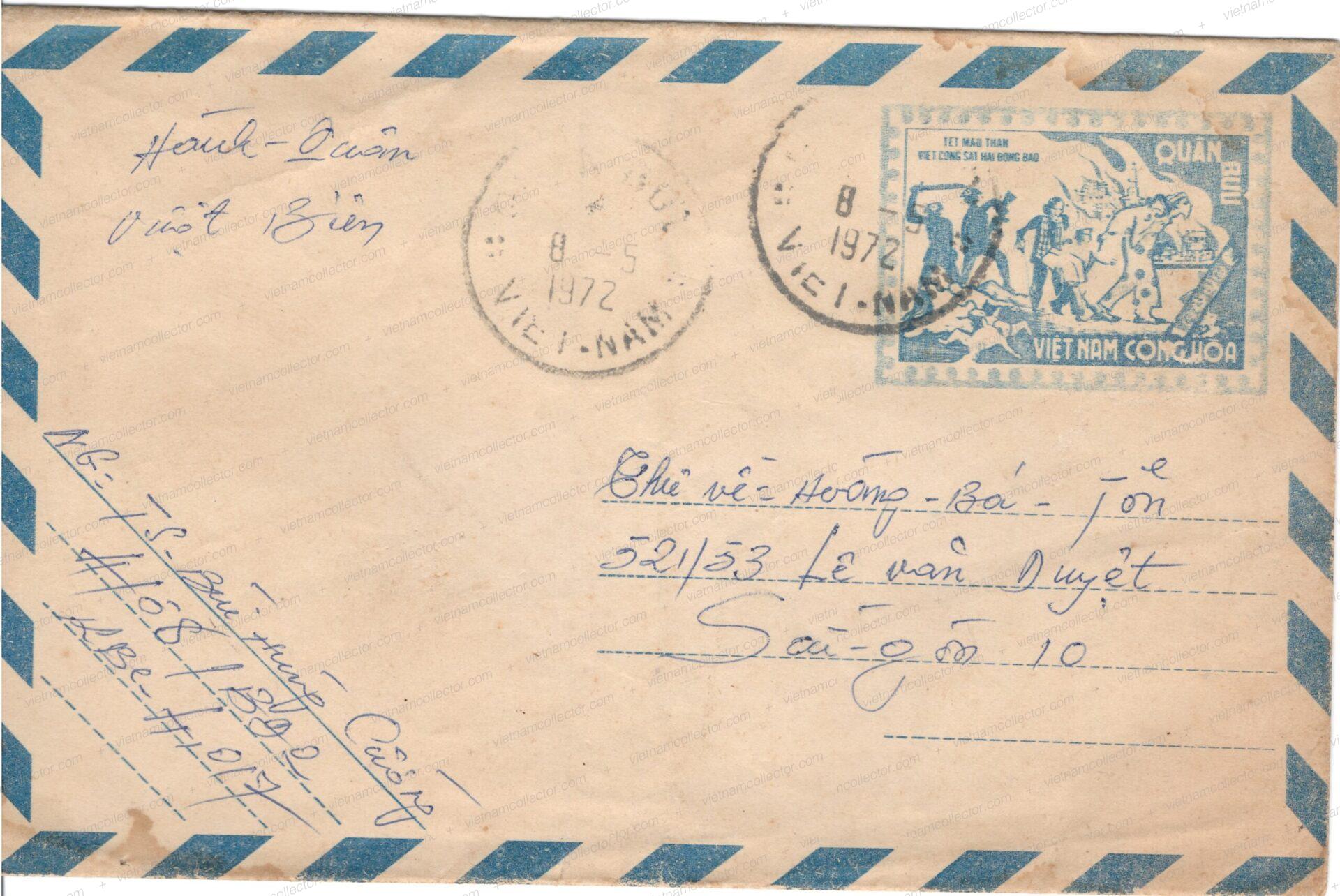
Folded letter with the free frank cancelled by the large double circle unit cachet of the 3rd Armored Squadron, !st Company, Mechanized (Co Goi). This was a unit of Armored Personnel Carriers plus tanks, carrying infantry. Note the partial printing failure on bottom left and top right of the imprinted stamp.
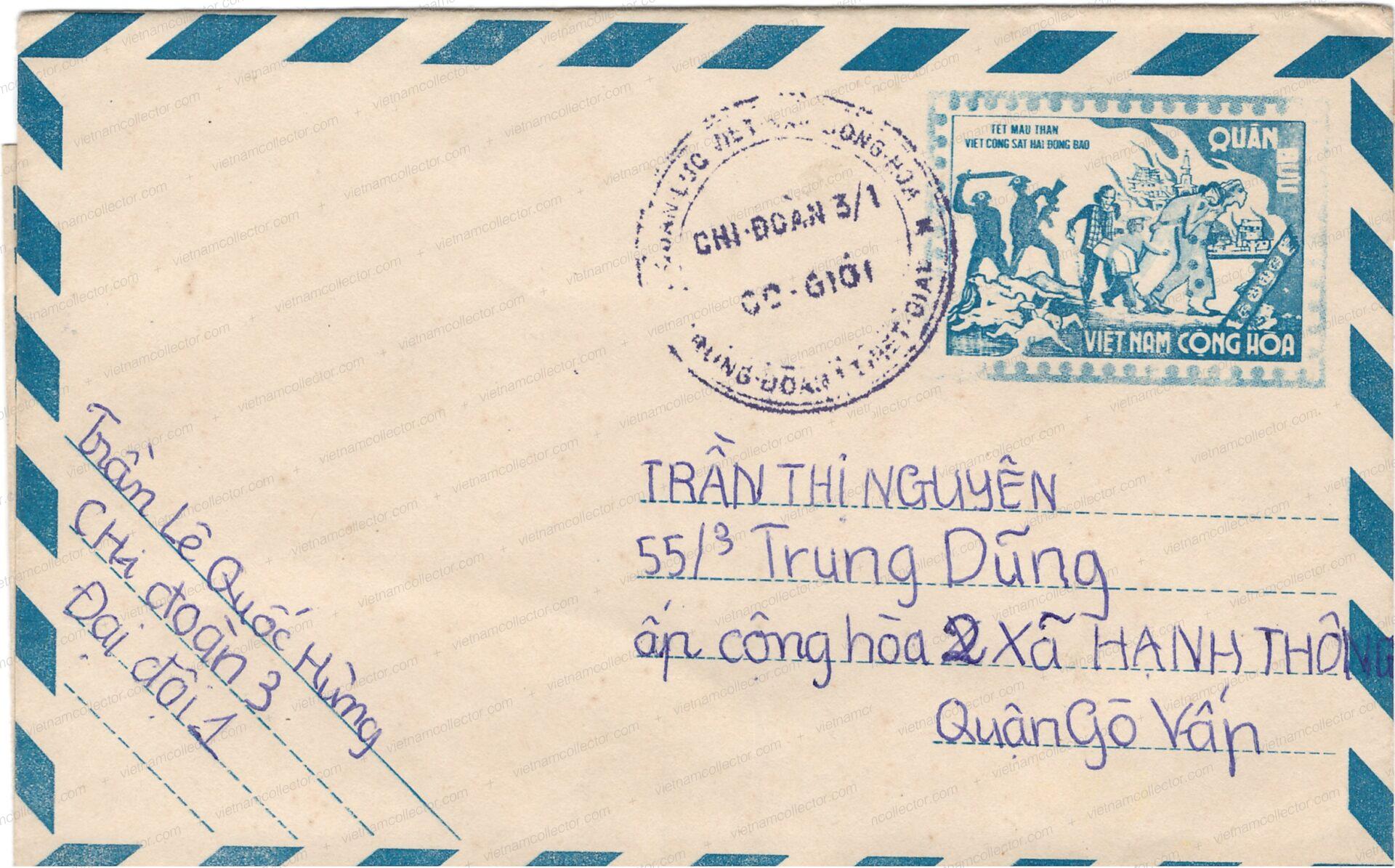
Rare folded letter with the military free frank that sent by registered mail by a member of the military (KBC 4757/Phu Yen Sub. Sector / Tieu Khu Phu Yen) to a civilian in Kien Phong. Since the aerogramme only covered the standard letter rate stamps in the amount of 24D were added to pay for the additional services on the reverse. Registered military letters are very hard to find.
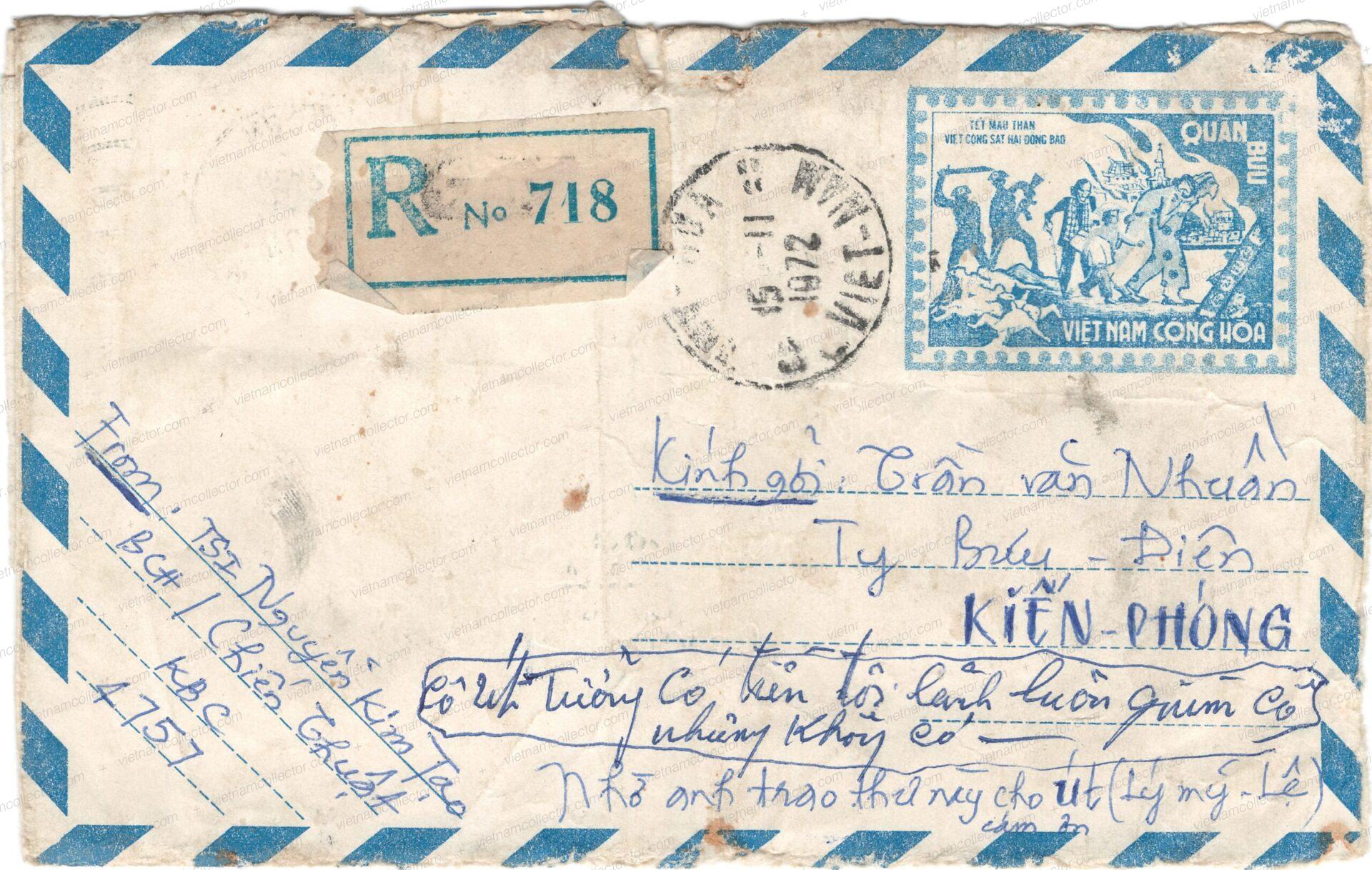
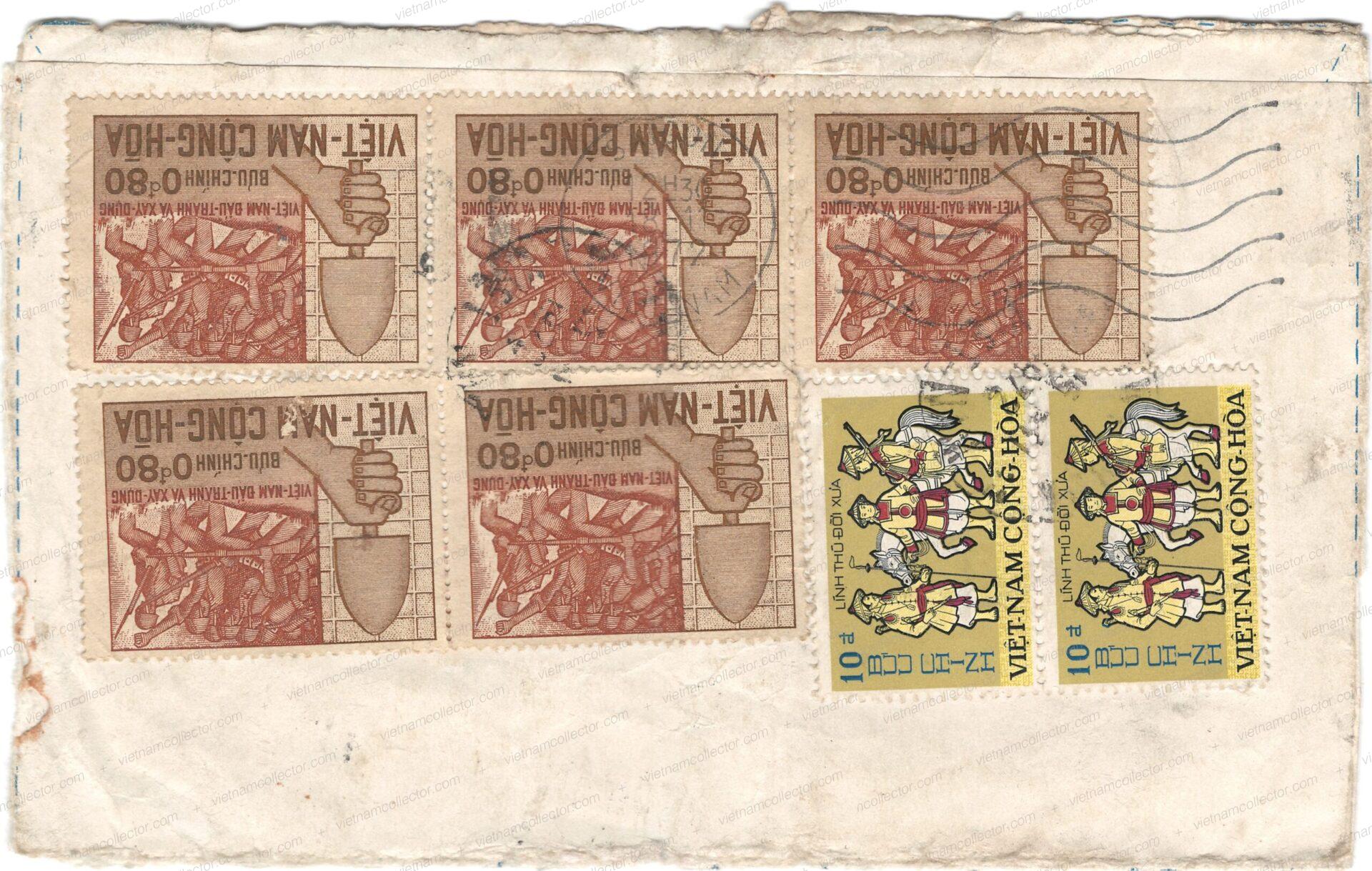
Folded letter sent by a member of the military (KBC 3969) to a civilian in Gia Dinh in January of 1971. Note the very light impression of the imprinted stamp.
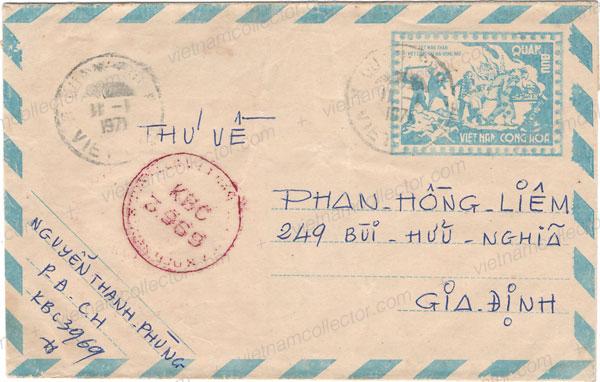
Folded letter sent by a member of the military (KBC 4821/ yet unlisted in the official SICP KBC listing) to a civilian in Saigon.
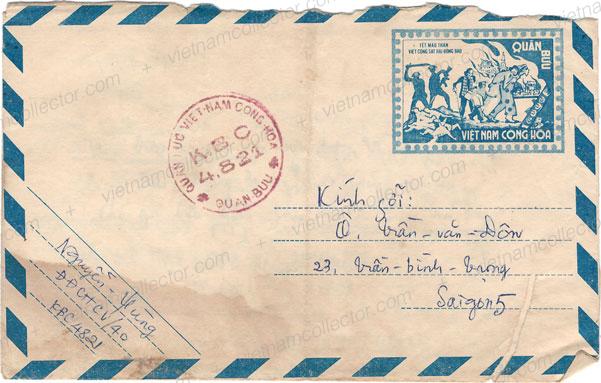
Folded letter sent by a member of the military (KBC 4774) to a military stamp collector in Saigon. Mute Quann Buu military cancel. Philatelic usage.
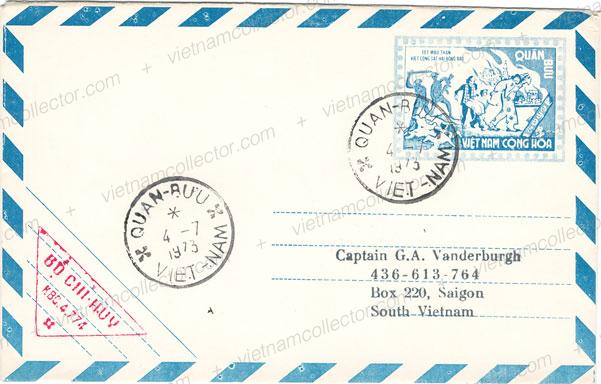
Folded letter sent by a member of the military (KBC 4124) to a civilian in Saigon. Full contents preserved. Mute Quan Buu military cancel from December 1974.
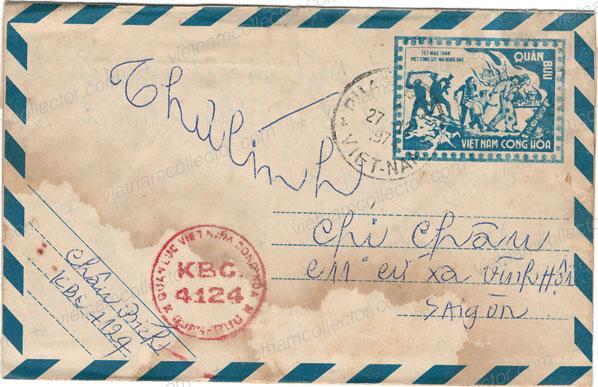
Folded letter sent by a member of the military (KBC 3333/1st Battalion “Wild Birds”, Marine Unit in Saigon) mailed from Rach Dang to a civilian in Saigon in August of 1969.
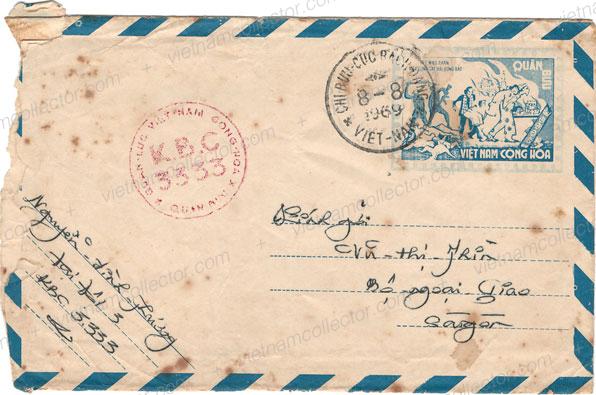
Registration Nr. 200855

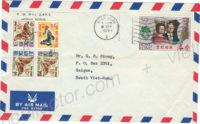
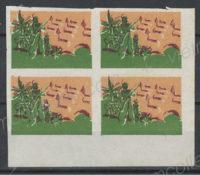
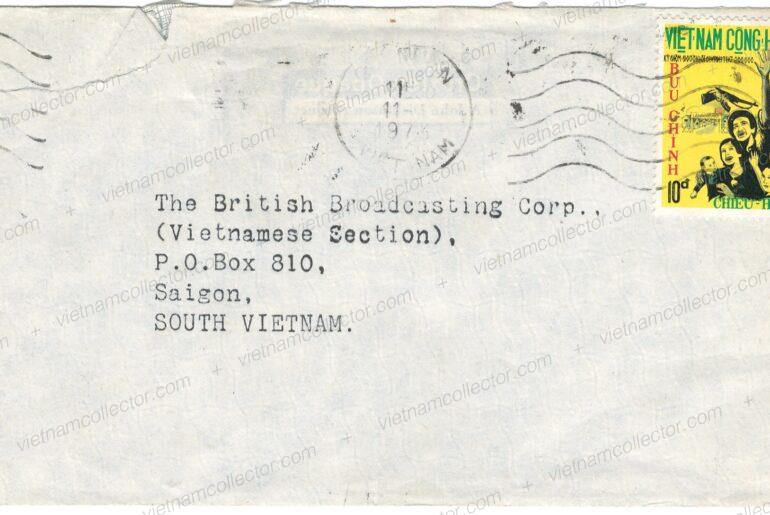
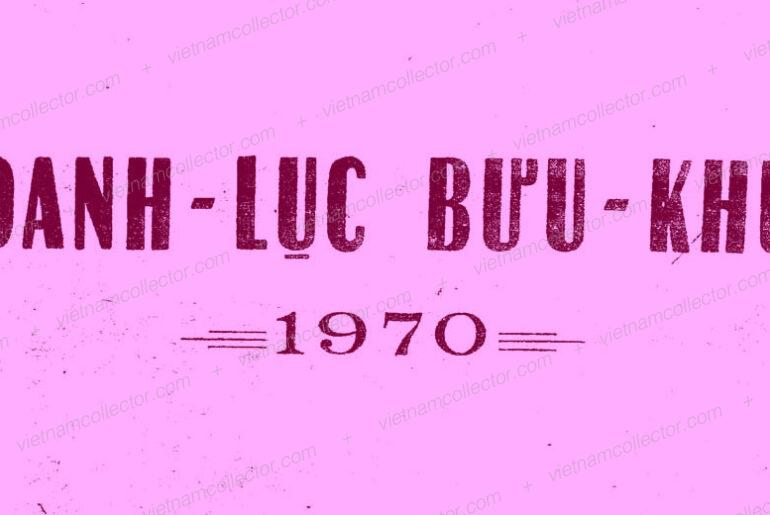
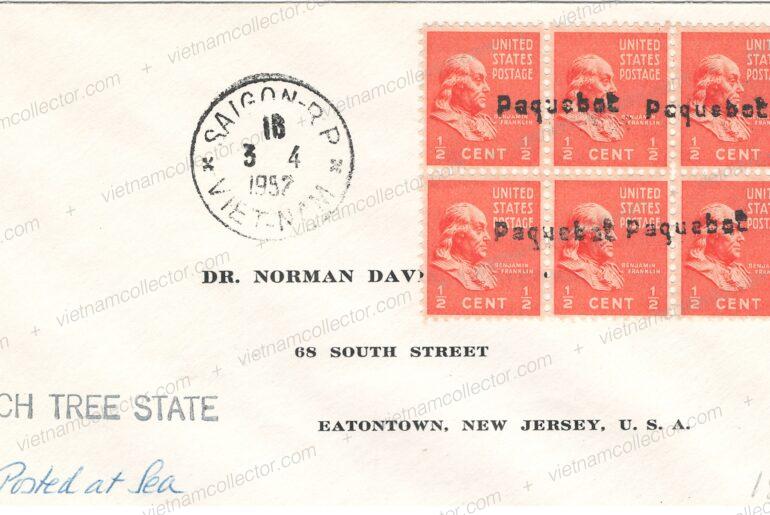
Comments are closed.